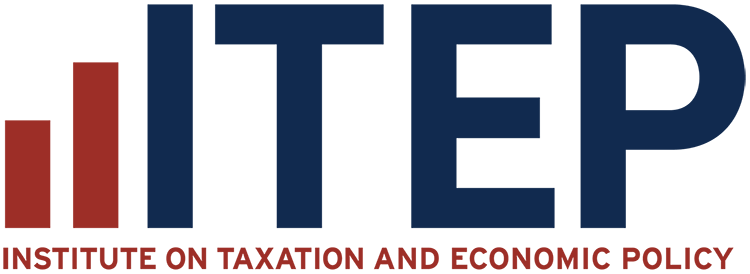
Recent Work
2116 items
How Federal Tax Reform Can Help or Hurt State and Local Governments
April 25, 2012 • By Matthew Gardner
Federal tax reform can affect state and local taxes in several ways. The federal government can create, repeal or change tax expenditures in a way that is passed on to the states because virtually every state has tax rules linked to the federal rules. The federal government can subsidize state and local governments’ ability to […]
Regarding Proposals to Increase Taxes on Upper-Income Rhode Islanders
April 24, 2012 • By Meg Wiehe
My testimony focuses in general on the slate of bills in front of the committee today that would raise taxes on wealthy Rhode Islanders. These bills present Rhode Island policymakers sensible revenue-raising options that could be used to either prevent deeper spending cuts or restore spending to vital public investments such as education, health care, […]
Since Tennessee Governor Bill Haslam proposed reducing the state’s estate tax in February, Tennessee lawmakers have shown increasing interest in this idea. Recently, a House subcommittee one-upped the governor by approving a bill that would gradually repeal the tax outright. House Speaker Beth Harwell explained this move by noting that “[w]e know this tax drives […]
Tax Plans Put Kansas on Road Away from Fair & Adequate Tax Reform
March 30, 2012 • By Meg Wiehe
Both the House and Senate have recently passed bills, loosely modeled on the Governor’s plan, that would reduce income tax rates, but their plans are different in very important ways. This ITEP report assesses the impact of the House and Senate plans on state revenues and tax fairness, and finds that each of these plans […]
Most Tax Cuts Flow to the Top 1%, Vast Majority of Idahoans Receive No Benefit An income tax cut recently passed by the Idaho House of Representatives, and backed by Governor Butch Otter, would reduce state revenues by over $35 million a year while benefitting only a small fraction of the wealthiest Idahoans. Four out […]
Alaska Senate State Affairs Committee Regarding SB 29, The Alaska Tax Break Transparency Act
March 6, 2012 • By Carl Davis
My testimony today deals with Senate Bill 29, which would take an important first step toward achieving these goals by requiring regular scrutiny of Alaska “tax expenditures”—that is, the various tax credits, deductions, exemptions, and other breaks that reduce Alaska tax revenue. The basic insight behind the idea of “tax expenditures” is that a law […]
SB 249 would permanently reinstate the “millionaires’ tax” that expired at the end of 2010. This testimony emphasizes that the “millionaires’ tax” makes Maryland’s tax system at least somewhat less unfair than it otherwise would be; that reinstating the tax would result in a substantial federal tax cut for upper-income Marylanders; and that claims about […]
Arthur Laffer Regression Analysis is Fundamentally Flawed, Offers No Support for Economic Growth Claims
February 15, 2012 • By Carl Davis
A November 2011 report from the Oklahoma Council for Public Affairs (OCPA) in partnership with Arduin, Laffer & Moore, a consulting group headed by Arthur Laffer, explains the method that Laffer has been using to make the case that tax cuts lead to economic growth. The results he offers appear impressive, but his methods are […]
“High Rate” Income Tax States Are Outperforming No-Tax States
February 8, 2012 • By Carl Davis
Don’t Be Fooled by Junk Economics With the economy lagging, lawmakers seeking to reduce or eliminate state personal income taxes are touting their proposals as tools for boosting economic growth. Of particular note are the governors of Kansas and Oklahoma, both of whom justified income tax repeal in their State of the State speeches by […]
Kansas Governor Tax Proposal: Wealthy Kansans Pay Less, Poor and Middle-Income Kansans Pay More
January 11, 2012 • By Meg Wiehe
Kansas Governor Sam Brownback unveiled his long anticipated tax plan last week. Sweeping changes to reduce the state’s reliance on its progressive personal income tax are at the core of the proposal. The plan cuts income tax rates, eliminates a variety of income tax deductions and credits, and makes permanent a temporary sales tax rate […]
State gas taxes are currently levied in every state, and are the most important source of transportation revenue under the control of state lawmakers. In recent years, however, state gas taxes have fallen dramatically relative to the rising cost of asphalt, concrete, labor, and everything else that goes into maintaining a transportation network. The results […]
In October, South Carolina Governor Nikki Haley suggested that gradually repealing the state’s corporate income tax should be a priority for lawmakers in 2012. Haley’s idea was alarming, but hardly surprising: in the past year, governors in Arizona and Florida have proposed similar plans, and lawmakers in a number of other states have moved to […]
Earlier this year, Berkshire Hathaway Chairman Warren Buffett made headlines by publicly decrying the stark inequity between his own effective federal tax rate (about 17 percent, by his estimate) and that of his secretary (about 30 percent). The resulting media firestorm has drawn welcome attention to unfair tax breaks that allow the richest Americans to […]
Given the challenging fiscal climate facing Kansas, the proposed income tax plan should be thought of not simply as a tax cut but as a tax swap. News reports confirm our expectation that revenues from income taxes would be at least partially replaced by sales and property taxes under the Governor’s plan. The graphic below […]
Lawmakers often provide targeted tax cuts to groups of individuals or corporations in the form of special tax breaks--including exemptions, deductions, exclusions, credits, deferrals, and preferential tax rates. These tax breaks have long been called "tax expenditures" because they are essentially government spending programs that happen to be administered through the tax code. However, tax expenditures are usually less visible than other types of public spending and are therefore harder for policymakers and the public to evaluate. This policy brief surveys the difficulties created by tax expenditures, and describes options for better integrating them into the normal budget process.
